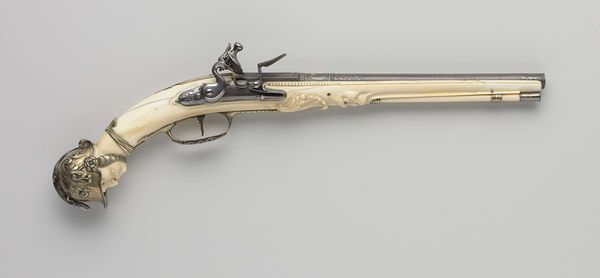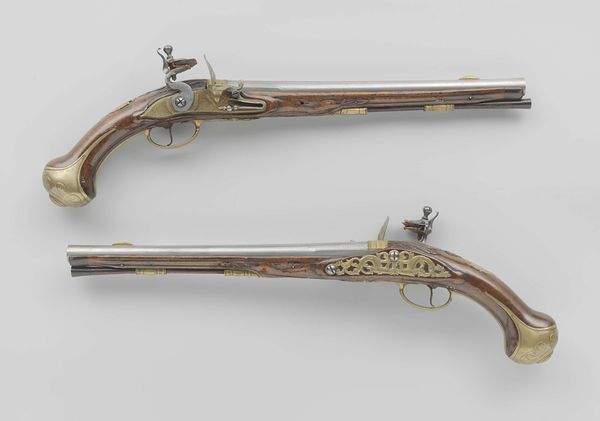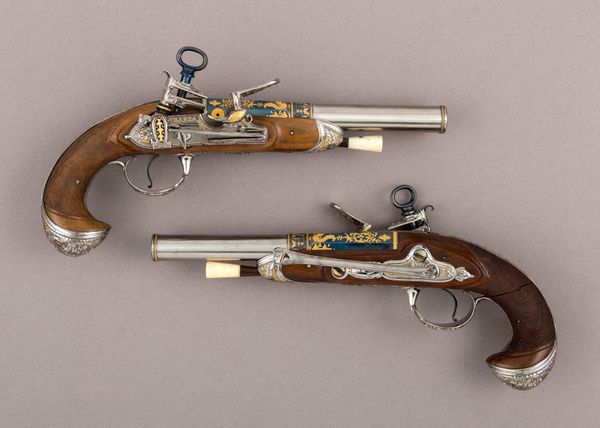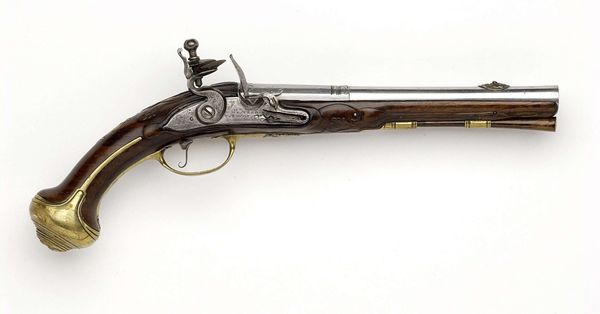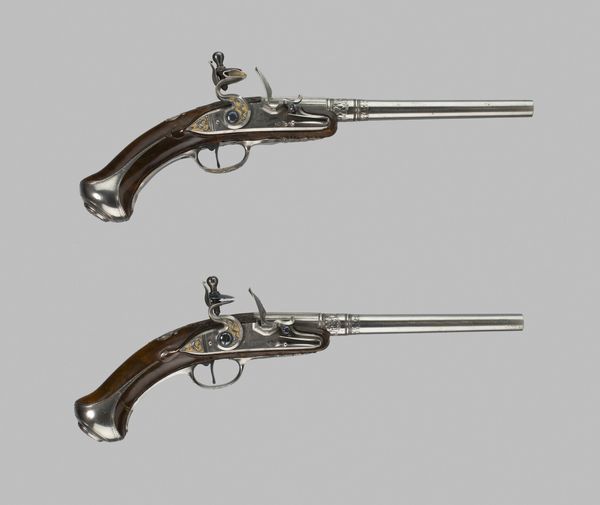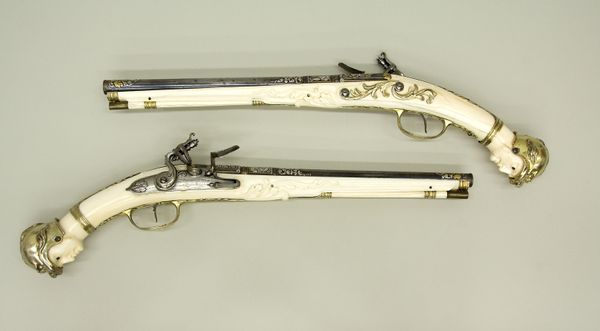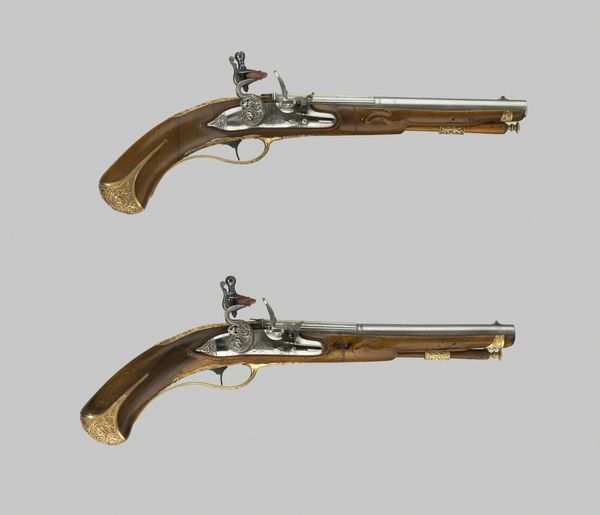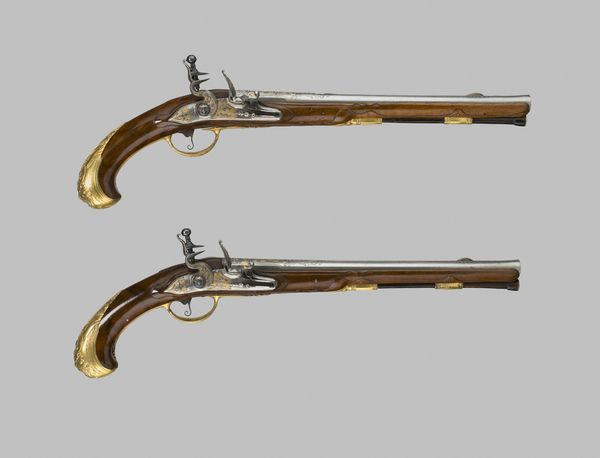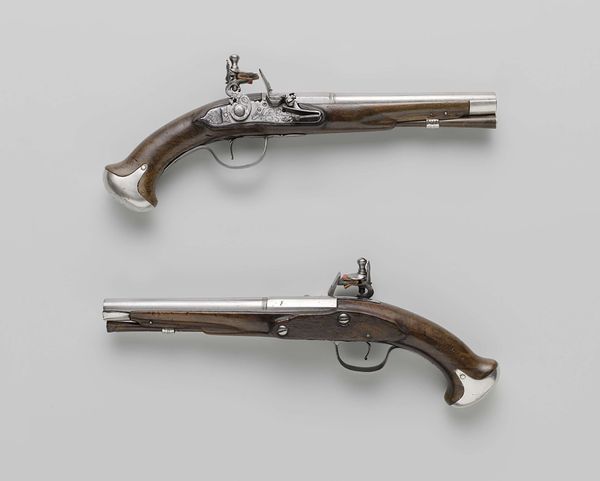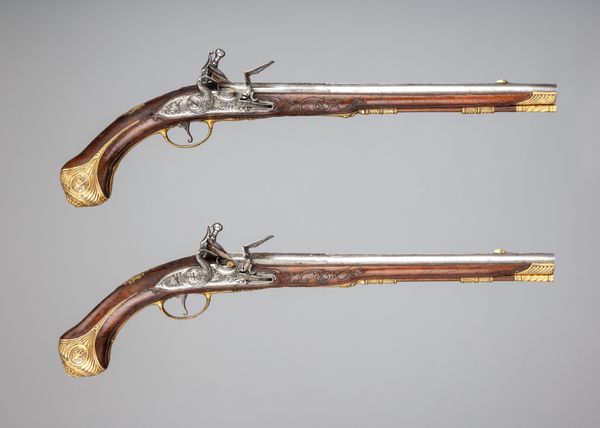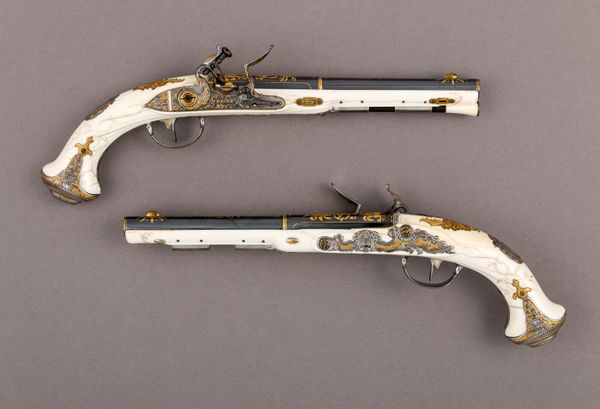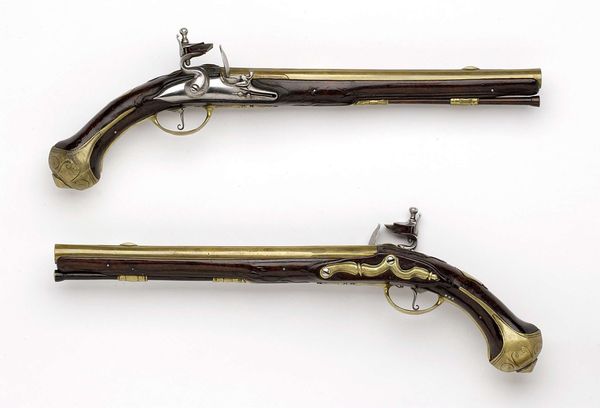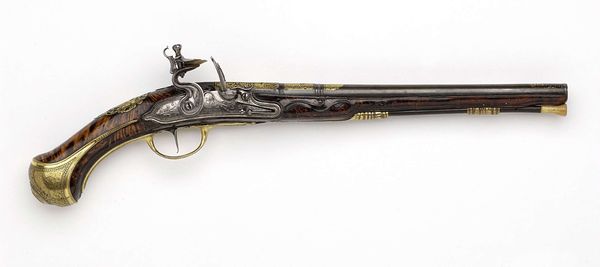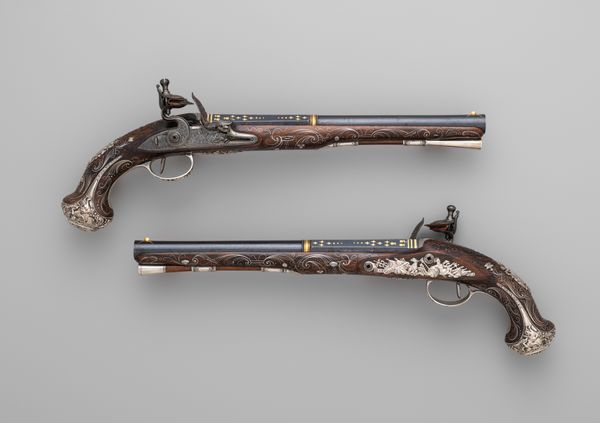
metal, ivory
#
baroque
#
metal
#
ivory
Dimensions: length 46.6 cm, length 30.4 cm, diameter 14.2 mm, weight 1094 gr
Copyright: Rijks Museum: Open Domain
Editor: Here we have a pair of flintlock pistols from around 1660-1665, crafted by Michel de la Pierre. They're made with metal and what appears to be ivory. They look so ornate. What's your take on these objects? Curator: Well, they represent more than just Baroque aesthetics. Consider them within the context of power and violence. Who would have owned these? What did ownership signify during that period? Editor: Presumably someone wealthy and of high status, if the materials are any indication. Did owning something like this make a statement about social position? Curator: Absolutely. But beyond mere status, think about what these pistols enabled: colonization, the enforcement of social hierarchies, the silencing of dissent. These beautiful objects participated in violence and oppression. Do you see the inherent tension there? Editor: Definitely. They're beautiful and expertly crafted, but represent something far more complex and troubling than just aesthetic appreciation. Is there a reading beyond the object? Curator: The ivory itself implicates global trade, potentially through exploitative colonial networks. Metalwork too. Question where each material came from, the labor involved. We’re looking at the material consequences of power. How do we reconcile admiring their beauty while acknowledging that painful history? Editor: I guess I hadn’t fully considered the colonial implications inherent in even the materials. It forces a more honest assessment. Curator: Precisely. We need to look critically at even these beautiful objects, questioning the narratives they silently uphold, and challenge those histories. What are you walking away thinking now? Editor: I'm definitely seeing these as tools and as symbols, more about social structure and less about individual style. A new, less romantic lens, for sure. Thanks for your time!
Comments
rijksmuseum about 2 years ago
⋮
Michel de la Pierre began his career as a soldier in the army of the Dutch Republic. In 1632 he arrived in Maastricht, where he set up business as a gunmaker and merchant. Although De la Pierre supplied the army with large quantities of weapons, he also furnished wealthy patrons with luxury pistols. This pair of pistols is made of walrus tusk instead of the usual elephant ivory.
Join the conversation
Join millions of artists and users on Artera today and experience the ultimate creative platform.
